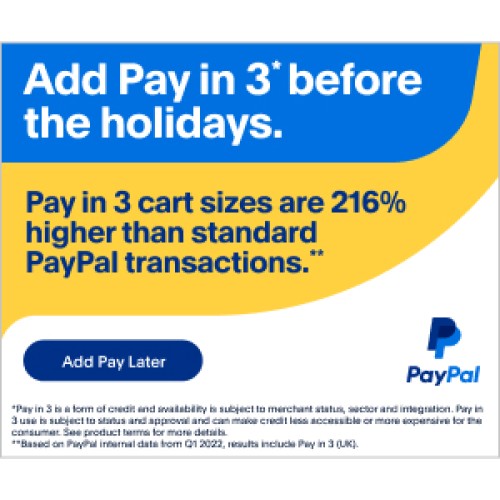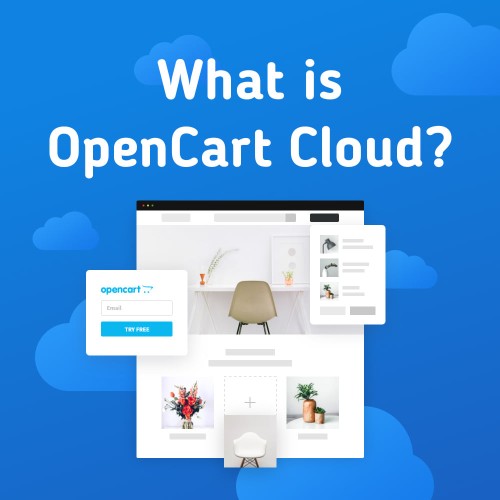Google Merchant Center is a powerful tool that can significantly boost online sales. It provides a streamlined platform to manage and promote your products to billions of potential customers.
How? It’s the number one place online shoppers go to discover a new item or product. Crazy, right?
So using Google's vast network and advanced advertising features, you can effectively reach your target audience and drive more traffic to your online store.
In other words, you're signing yourself up to have your products reach potential customers at the exact moment they're searching for a specific item or browsing relevant content.
And we’ve created the perfect step-by-step guide that’ll explain how to use Google Merchant Center to grow your online business.
Let’s dive in.
Step 1: Register your business
Setting up a Google Merchant Center profile requires proper business registration within your respective state. Why? It's crucial to ensure compliance with local laws and establish a legitimate presence.
Understanding the differences in Limited Liability Company (LLC) laws across states can help you find the proper business legal structure before accepting your first online orders.
When creating a Google Merchant Center account, you must provide valid business information, including your legal business name, address, and tax identification number.
This information is necessary to verify the legitimacy of your business and its eligibility to operate as a merchant on Google's platform. Therefore, being properly registered within your state is a prerequisite to completing the setup process.
Remember that LLC laws vary from state to state in the United States. While an LLC generally offers limited liability protection to its owners, the specific regulations and requirements can differ significantly.
For example, the formation process, management structure, taxation rules, and reporting obligations may vary depending on the state. Here are some examples of LLC guidelines by state:
California has One of the highest annual fees: 800$ (called Franchise Tax). Also, Highest GDP in the US (3.5 trillion) and one of the biggest economies in the world.
Texas does not impose a personal income tax and formation cost is relatively expensive (300$).
Florida taxes are notoriously low, as is the general cost of living. Florida also boasts a strong labor market and a high growth rate for small businesses.
Delaware doesn’t charge foreign LLCs (LLCs that their owners don't reside in Delaware) tax on out-of-state income. You can start a Delaware LLC even if you’re not a resident or don’t have a physical office in the state (true for all states).
New York has higher fees compared with other states. New LLCs must publish a Notice of Formation in two local newspapers (for 6 consecutive weeks) - and file an affidavit of publication along with a certificate of publication.
Each state has different LLC requirements, including registration fees, laws, and taxes.
Don't skip this step. It's crucial to protect yourself before opening your doors to your first customer.
Knowing you've taken all the proper legal steps before making your first dollar of revenue will keep your stress levels low as you grow your business. And, of course, it's a necessary requirement by Google.
Step 2: Set up your Google Merchant Center account
After registering your business, you need to create an account to get started with Google Merchant Center.
Visit the Google Merchant Center website and sign in using your Google account credentials. If you don't have a Google account, you can easily sign up for free.
Once you're logged in, click the "Get started" button to begin the setup process.
The first step is to enter your business information. Provide your store's name, website URL, and country where your business is located.
Screenshot by Brandon Lee
It's important to ensure that this information is accurate and up to date, as it'll be displayed to potential customers when they view your product listings.
Next, you'll need to verify and claim your website. This process involves adding a meta tag or uploading an HTML file provided by Google to your website's backend.
Screenshot by Brandon Lee
This step is necessary to confirm that you are the owner or an authorized representative of the website you're adding to Google Merchant Center.
Once your website is verified, you can move to the setup stage for your data feed. A data feed is a file that contains detailed information about your products, such as their names, descriptions, prices, and images.
Google uses this feed to understand and display your products accurately. More about that in the next step.
Step 3: Add and manage your product inventory
Now that your Google Merchant Center is ready, it's time to add your product inventory. As mentioned above, you must create a data feed containing all the relevant product information to do this.
For this, you'll need to focus on details such as the product title, description, price, availability, and unique identifiers like the Global Trade Item Number (GTIN) or MPN (Manufacturer Part Number).
There are several ways to generate a data feed. If you have a small number of products, you can manually enter the information into a spreadsheet and save it as a CSV or XML file.
Alternatively, if you have a larger inventory or an online store, you can use a plugin or extension that automatically generates the data feed from your database. Some popular plugin options include CTX Feed and Elex WooCommerce Google Shopping.
These tools often provide additional features like inventory management and automatic updates to ensure your product information remains accurate and current. It’s also possible to do this by taking advantage of headless commerce capabilities.
Once you have your data feed ready, you can:
Upload it to Google Merchant Center.
Go to the "Products" section and click the "Feeds" tab.
Then, click the "Add primary feed" button and follow the instructions to upload your data feed file.
Google will validate the feed and notify you of any errors or issues that need attention. It's important to ensure your data feed is well-structured and follows Google's guidelines to avoid potential problems.
After your data feed is successfully uploaded, Google will process the information and make your products eligible to appear in search results.
Screenshot by Brandon Lee
It may take some time for your products to be fully indexed and displayed, so be patient and watch the progress using the "Products" section in Google Merchant Center.
Step 4: Optimize your product feeds for better visibility
While uploading your product inventory is essential, optimizing your product feeds is equally important to maximize your visibility and attract potential customers.
By following best practices and implementing optimization techniques, you can improve the chances of your products appearing in relevant search results and increase your online sales.
One of the key aspects of optimizing your product feeds is to ensure that your product titles and descriptions are accurate and descriptive.
You should also:
Use relevant keywords that potential customers will likely search for and include any unique selling points or features that set your products apart from the competition.
Avoid using generic terms or misleading information, leading to poor user experience and negatively impacting your sales.
Use clear, well-lit photos with a white background to enhance the visual appeal of your products. It's also important to include accurate pricing information, availability status, and additional attributes relevant to your product category.
Another important optimization technique is to apply product categories and custom labels. Google provides a standardized taxonomy of product categories you can assign to your products.
This customization helps Google understand the context and relevance of your products, improving their chances of appearing in relevant search results.
On the other hand, custom labels allow you to create your own categorization system based on your specific business needs. This feature can be useful for segmenting and localizing your products and running targeted advertising campaigns.
Step 5: Create and manage product listings and campaigns
Once your product inventory is uploaded and optimized, you can create product listings and campaigns in Google Merchant Center.
A product listing is a specific product instance you want to promote. It includes all the relevant information about the product, such as the title, description, price, and availability.
Screenshot by Brandon Lee
To create a product listing, navigate to the following:
"Products" section in Google Merchant Center and click the "Listings" tab.
Then, click the "Add new listing" button and select the products you want to include.
You can choose individual products or create a group based on specific criteria, such as product category, brand, or custom labels.
Once you've selected the products, you can customize the listing by adding details or modifying the existing information.
For instance, you can specify the target country or region, set the bid amount for the listing, and choose the campaign type.
Google offers different campaign types, such as "Shopping" campaigns, "Showcase" ads, and "Local" campaigns, each with unique features and targeting options.
After creating your product listing, you can watch its performance and adjust it as needed. Google Merchant Center provides detailed insights and analytics to help you understand how your listings perform.
You can track metrics like impressions, clicks, and conversions and monitor the return on investment (ROI) of your advertising campaigns.
This data lets you identify any issues or opportunities and make data-driven decisions to optimize your online sales.
Step 6: Leverage product data attributes
Product data attributes are the key pieces of information that describe your products. They provide context and relevance to Google's search algorithms and help determine when and where your products appear in search results.
Understanding and applying these attributes can significantly improve your online sales and visibility.
Some of the most important product data attributes include:
Product ID. A unique identifier for each product, like the GTIN (Global Trade Item Number), MPN (Manufacturer Part Number), or any other unique identifier that accurately represents the product.
Title. The name or title of the product. Keep it concise, descriptive, and include relevant keywords.
Description. A detailed sentence highlighting the product's features, benefits, and unique selling points. Use clear and concise language to provide accurate information to potential customers.
Price. The current price of the product. Double-checking that the price is accurate helps avoid any potential issues or discrepancies.
Availability. The availability status of the product. It might range from "in stock," "out of stock," or any other relevant status that accurately reflects the product's availability.
Brand. The brand or manufacturer of the product. This attribute helps users filter and compare products from different brands.
Image. High-quality images that showcase the product. Use clear, well-lit photos with a white background to enhance the visual appeal of your products.
Condition. The condition of the product. Some popular descriptions include "new," "used," or any other relevant condition accurately representing the product's state.
By providing accurate and detailed information for these attributes, you improve the chances of your products appearing in relevant search results and attracting potential customers.
It's important to ensure the information is accurate, up-to-date, and consistent across all your product listings to maintain a positive user experience and drive more online sales.
Step 7: Take full advantage of Google Merchant Center tools and features
Google Merchant Center offers a range of tools and features to help you optimize your online sales and advertising campaigns. Utilizing these features to their full extent can significantly enhance your customer marketing efforts.
These tools help streamline your workflow, improve product visibility, and maximize your return on investment (ROI).
One of the key tools Google Merchant Center provides is the "Product Diagnostics" feature. This tool helps you identify and fix issues or errors with your product data feeds.
It provides detailed insights into the health of your feeds, highlighting any missing or incorrect information that may prevent your products from appearing in search results.
By regularly monitoring and addressing these issues, you can ensure that your product listings are accurate and up to date, improving the chances of attracting potential customers.
Another useful tool is the "Promotions" feature.
This feature allows you to create and manage product promotional offers, such as discounts, free shipping, or buy-one-get-one (BOGO) deals.
By offering incentives to potential customers, you can increase the appeal of your products and drive more sales.
Google Merchant Center provides a simple interface where you can set up and customize your promotions, specify the eligibility criteria, and track the performance of your offers.
Additionally, Google Merchant Center integrates seamlessly with Google Ads, allowing you to run targeted advertising campaigns for your products.
You can create Shopping campaigns to promote your products across Google's vast network by linking your Google Merchant Center account with Google Ads. That way, you can display your products in search results, partner websites, and Google Shopping ads.
You can set your budget, define your target audience, and track the performance of your campaigns directly from Google Merchant Center.
Step 8: Track and analyze performance using Google Analytics
Tracking and analyzing your product listings' performance is essential to measure the success of your online sales and marketing efforts.
Google Analytics provides powerful metrics, tools and insights to help you understand customer behavior, identify trends, and optimize your strategies for better results.
By integrating Google Merchant Center with Google Analytics, you can access valuable data about your product listings, such as impressions, clicks, conversions, and revenue.
This data lets you identify which products perform well, understand customer preferences, and make data-driven decisions to improve your online sales.
Google Analytics also provides advanced features like audience segmentation, conversion tracking, and goal tracking.
These features allow you to analyze the behavior of specific customer segments, track the effectiveness of your marketing campaigns, and measure the success of your business goals.
Step 9: Know how to troubleshoot common issues in Google Merchant Center
Google Merchant Center can help boost your online sales, but there are some challenges to watch out for.
There are several common issues that you may encounter when using the platform, but with the right knowledge and troubleshooting techniques, you can overcome these obstacles and ensure a smooth online selling experience.
One common issue stems from disapproved or suspended product listings. Google has strict guidelines and policies that govern the types of products that you can advertise.
If your product violates these policies, Google will likely disapprove or suspend it from appearing in search results.
To resolve this issue, carefully review Google's policies and make sure your product listings follow them. If your product is disapproved, make the necessary changes and resubmit it for review.
Another issue is data feed errors or warnings. Google Merchant Center validates your data feed to meet the required standards. If there are any errors or warnings in your feed, it may impact the visibility or eligibility of your products.
To troubleshoot these issues, carefully review the error messages provided by Google and make the necessary corrections. Common errors include missing required attributes, incorrect formatting, or invalid data.
It's also important to regularly track your product listings and campaigns for any performance issues. If you notice a decline in impressions, clicks, or conversions, it may indicate an issue with your product data or advertising strategies.
Review your data feed, check for errors or missing information, and adjust as needed. Additionally, analyze your advertising campaigns to ensure they target the right audience, use relevant keywords, and offer compelling incentives.
Final words
In conclusion, Google Merchant Center is a powerful tool that boosts online sales. By applying its features and following the step-by-step tutorial in this article, you can effectively manage and promote your products to a wide audience.
From setting up your account to optimizing your product feeds, creating listings and campaigns, and tracking performance, Google Merchant Center provides the necessary tools and insights to drive more traffic and maximize your online sales.
Happy selling!



Login and write down your comment.
Login my OpenCart Account